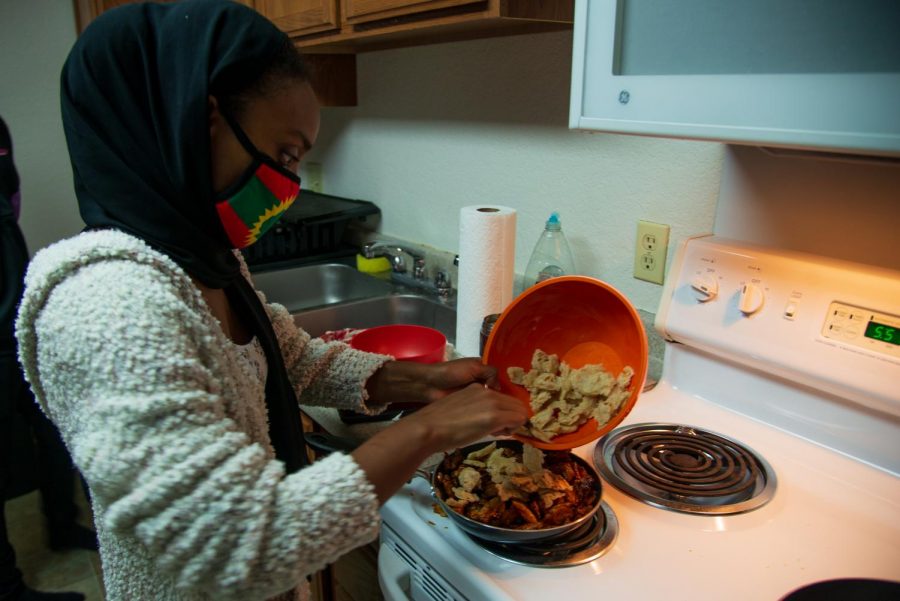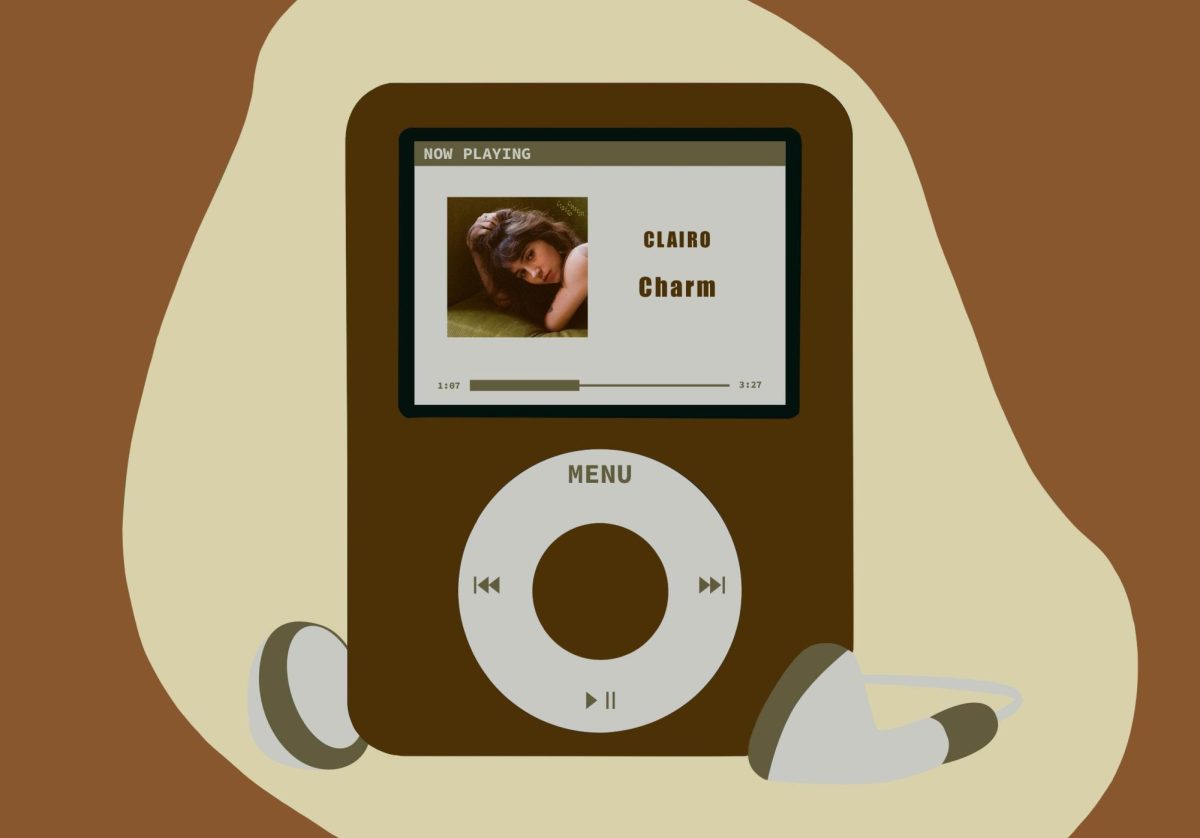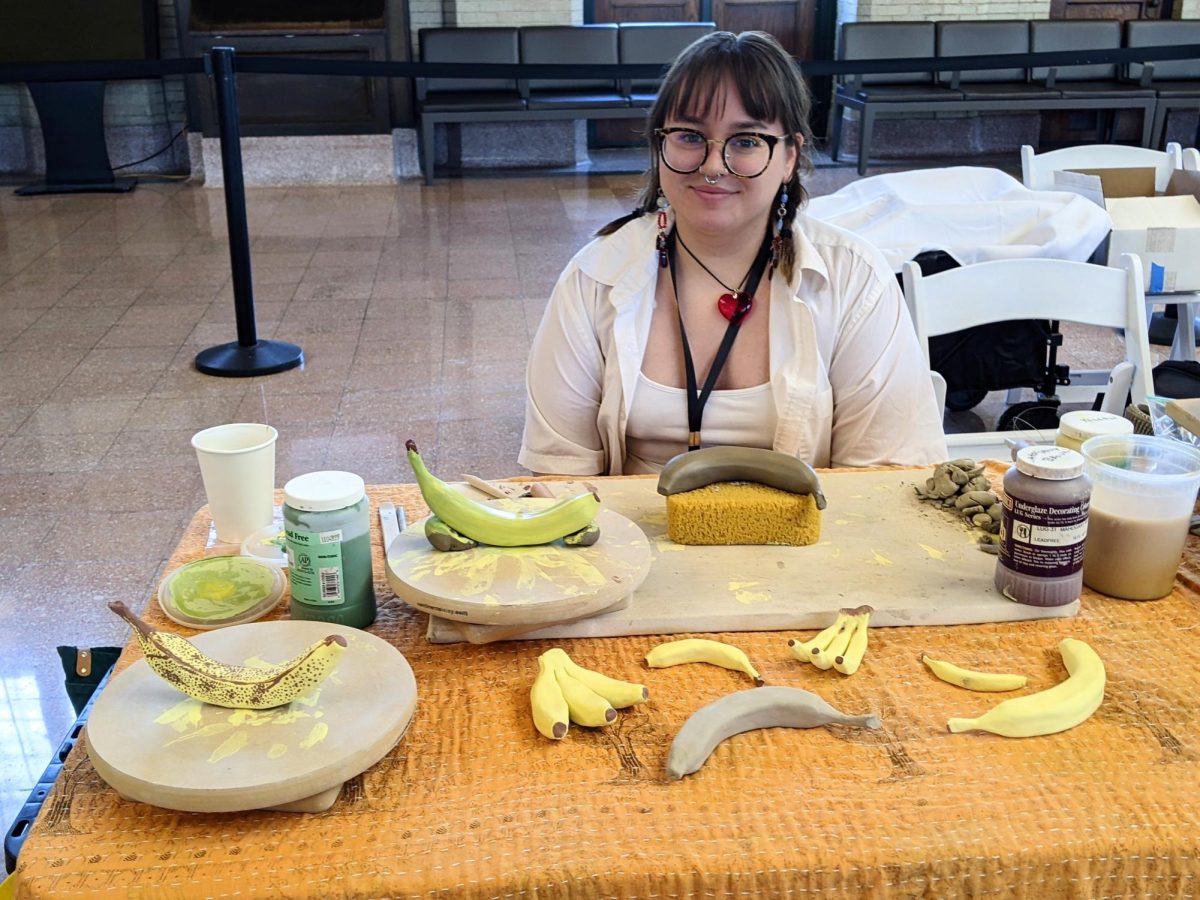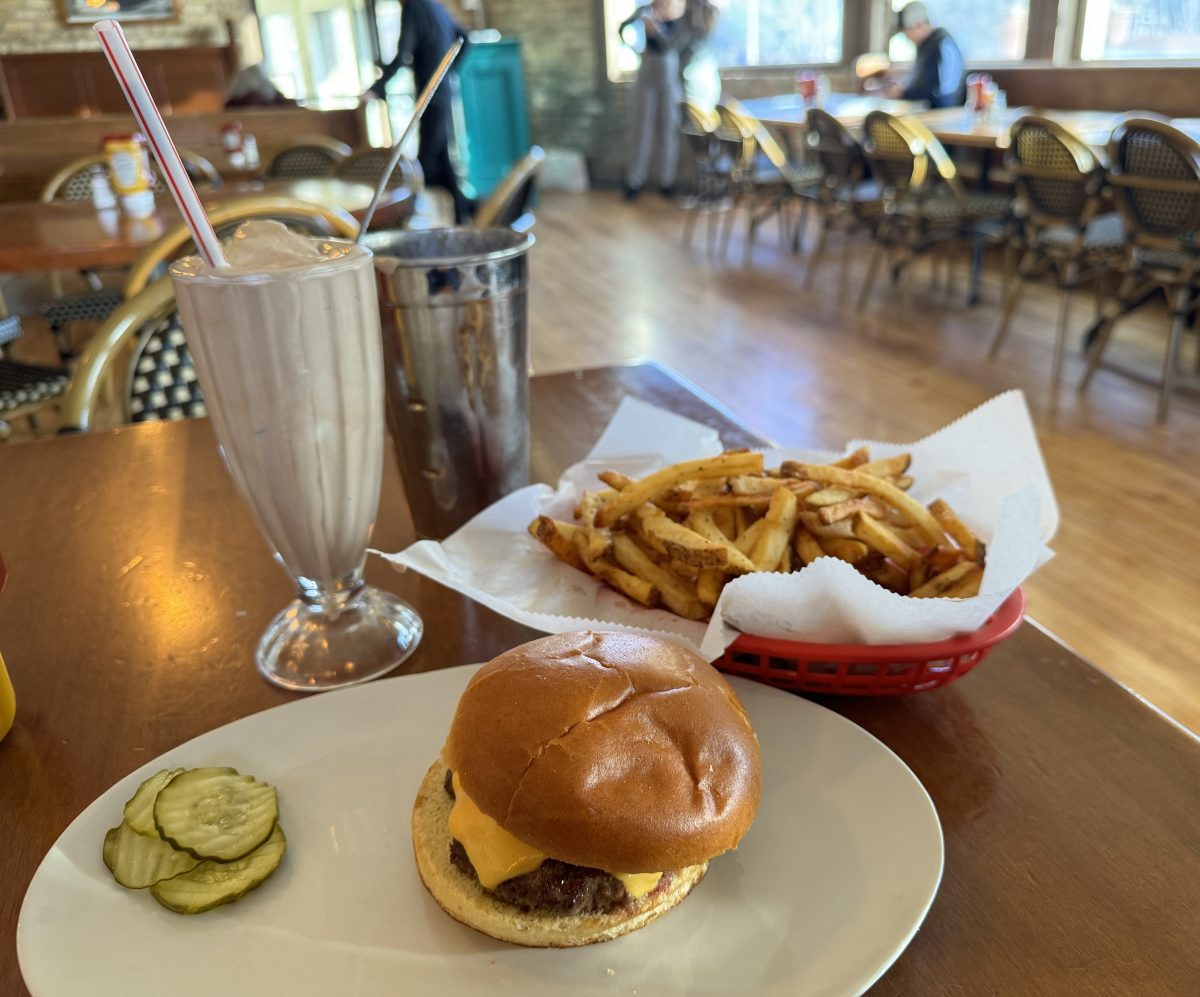This week’s Sharing Food recipe comes from the Oromo Student Union (OSU).
The Oromo people live in the Oromia region of Ethiopia. Estimates of the Oromo population in Minnesota vary widely. A 2016 survey by the Oromo Cultural Institute of Minnesota found about 40,000 Oromo Americans live in Minnesota, but the state demographer’s office estimated the number is about 8,500.
Cacabsa is a spiced bread dish that is eaten for breakfast in the Oromia region. It is made in a very large circular pan called an eelee and, before it is shredded into pieces and mixed with a spiced butter blend, resembles a tortilla. In Oromo, “cabsuu” means to rip apart or break, according to OSU member Meea Mosissa.
When OSU member Sonne Terfa thinks of this dish, she thinks of weekend mornings when her family had a little more time to prepare an extensive breakfast. OSU member Derartu Ansha chimed in.
“My mom doesn’t cook this often, so when she does, I know it’s made with love,” Ansha said.
When asked about the differences between Oromo culture and American culture, Ansha responded with a giggle, “It ain’t Minnesota.”
Ansha lived in the Oromia region for the first seven years of her life. “You know your neighbors got your back there. It’s kind of like a huge family in a way,” she said. Ansha described how everyone would gather outside and eat meals together. Terfa added that eating food at someone else’s house is a sign of respect.
“It’s just this warmth of like, ‘Oh come into my space, and I’ll give you my food, and we’ll eat it together,’” Terfa explained.
Cacabsa is chewy in texture and extremely flavorful. You can find the teff flour, or Xaafi, at local Ethiopian grocery stores such as Shabelle Ethiopian Grocery and Restaurant on Franklin Avenue.
Ingredients:
2 cups Xaafi (teff flour)
1 teaspoon of salt
1 cup water
2 tablespoons of berbere (a blend of spices) *recipe for berbere below
1/4 cup dhadhaa (clarified butter)
Berbere (Recipe credit to Epicurious)
1/2 teaspoon fenugreek
1/2 cup ground dried New Mexico chiles
1/4 cup paprika
1 tablespoon salt
1 teaspoon ground ginger
1 teaspoon onion powder
1/2 teaspoon ground cardamom
1/2 teaspoon ground coriander
1/4 teaspoon ground nutmeg
1/4 teaspoon garlic powder
1/8 teaspoon ground cloves
1/8 teaspoon ground cinnamon
1/8 teaspoon ground allspice
Instructions:
In a large bowl, mix together the Xaafi, salt and water. The mixture should be the consistency of pancake batter, wet and doughy. Add more or less water depending on the consistency of your batter, then knead the dough with your hands for a few minutes. The dough will become more elastic through this process.
In a large skillet or round pan, pour the 1/2 cup dough into the pan, spreading it thinly. Cover it as it cooks. After a few minutes, the dough should take on some color on one side. Flip and repeat until all the batter is used.
In a separate pan, melt the dhadhaa with the berbere. Add a pinch of salt to your liking and stir to combine.
Once the bread is finished cooking, rip it up into shreds and mix it with the dhadhaa mixture. Mix until each shred is covered in the butter mixture. Serve.























